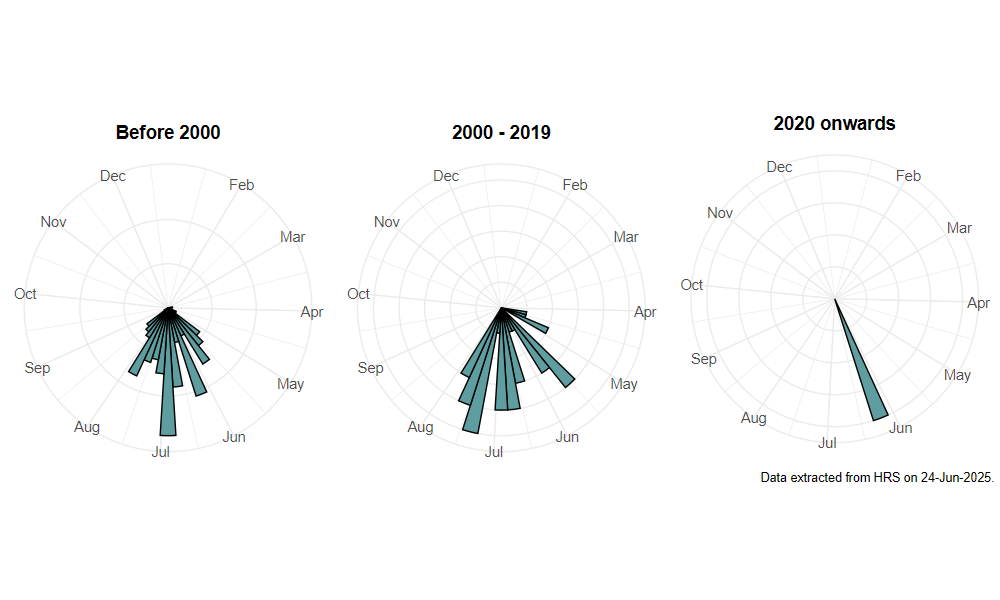Cheilosia mutabilis (Fallén, 1817)
Identification
Identification difficulty = 4. ![]()
![]() according to Ball & Morris, 20241
according to Ball & Morris, 20241
Biology
The larva has been found in the roots of Welted Thistle Carduus crispus, but as this is not a heathland species and C. mutabilis is also known from heathland, it must be assumed that a variety of host thistles are utilised. Adults rarely occur in numbers, most frequently being found as single individuals.
Flight period
The following plots show the number of unique records per week excluding those reported to be of immature stages.

Status
Lower Risk (Nationall scarce) - Ball & Morris, 20142. Notable - Falk, 19913. Rare (RDB3) - Shirt, 19874.
Distribution
Widely distributed as far as northern Scotland but with very noticeable concentrations of records in South Yorkshire and Derbyshire. Elsewhere, records are mainly scattered and offer no obvious pattern.

Trends
The following plots show the Frescalo TFactor vs year and a map of the rescaled frequency (all records) for the species.
-
Ball, S., & Morris, R. (2024). Hoverflies of Britain and Ireland. WILDGuides (3rd ed.). Oxford: Princeton University Press. ↩
-
Ball, S., & Morris, R. (2014). A review of the scarce and threatened flies of Great Britain. Part 6: Syrphidae. ( No. 9). Species status (pp. 1–130). Peterborough: JNCC. ↩
-
Falk, S. (1991). A review of the scarce and threatened flies of Great Britain. ( No. 39). Research and Survey in Nature Conservation (pp. 1–194). Peterborough: NCC. ↩
-
Shirt, D. (Ed.). (1987). Red Data Books: 2. Insects. Peterborough: NCC. ↩